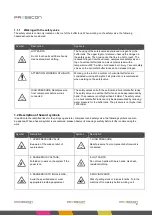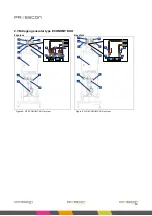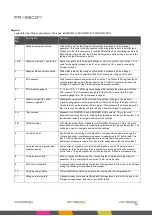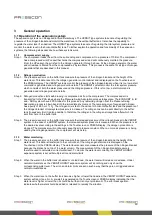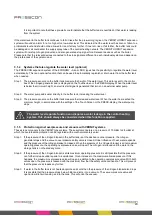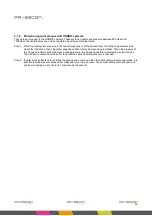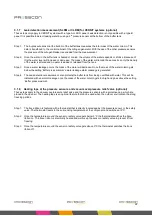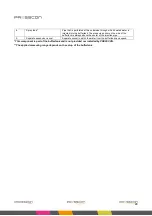
20
It is important to note that these pre-alerts could indicate that the buffer tank is overfilled or that water is leaking
from the system.
If the water level in the buffer tank continues to fall or rise after the pre-warning is given, the VERNIT HORNIT expansion
system will sound an alarm for a too high or too low water level. This indicates that the water level has risen or fallen to a
problematic level and should not be allowed to rise or fall any further. If it were to rise or fall further, the buffer tank could
be damaged or air could enter the supply spray tube of the central heating network. The VERNIT HORNIT expansion
system will now stop nitrogen production and also generate a stop signal for all relevant devices such as the boiler.
Please note that the relevant devices connected to the stop signal are different in each individual system and depend on
the preferences of the system owner.
3.1.4 Systems that also regulate the water level (optional)
The PRESSCON expansion system of the ECONOMY –A and –DUO types has the possibility to regulate the water level
automatically. This is an optional function that can be used to automatically replenish or drain water from the buffer tank
when needed.
Step 1. The pressure sensors on the buffer tank measure the height of the water level. This data is sent to the control
box of the nitrogen generator and is displayed on the Touchscreen or the PRESS-display. When the water level
is below the minimum height, an electric start signal is generated that turns on an external water pump.
Step 2. The water pump adds water directly to the buffer tank, increasing the water level.
Step 3. The pressure sensors on the buffer tank measure the increased water level. When the water has reached the
minimum height, in accordance with the settings of the Touch Screen or the PRESS-display, the water pump
stops.
The water level regulate function can disguise a water leakage in the central heating
system. This should always be considered when this function is applied.
3.1.5 Protection against overpressure and vacuum with VERNIT systems
These steps only apply to the VERNIT type systems. These systems operate on a pressure of 10 mBar to 28 mBar at
which the overpressure protection can be regulated with a mechanical safety valve.
Step 1. If the pressure of the nitrogen blanket in the buffer tank is at the desired nominal pressure, the nitrogen
generator stops and the vacuum- overpressure safety valve is closed. Under influence of heat, water expands
and the pressure of the nitrogen blanket increases. When the pressure of the nitrogen blanket is at its maximum
operating pressure, the operating overpressure valve will open. The nitrogen is relieved until the water in the
storage tank is not heated any more.
Step 2. If the pressure of the nitrogen blanket is at its maximum operating pressure it is still possible that the pressure
can further increase under special circumstances. It can increase to the maximum allowed pressure. If this
happens, the maximum overpressure valve will open in addition to the operating overpressure valve. With both
valves open, the pressure is relieved with the maximum flow that the safety valve can handle. This will prevent
that the pressure increases any further.
Step 3. If water in the buffer tank is not heated anymore and cools then the pressure of the nitrogen blanket also drops.
It is possible that the pressure drops below 0 Bar and turns into a vacuum. The vacuum pressure valve will
open and will let surrounding air into the tank. This will undo the vacuum.
Summary of Contents for HORNIT N2
Page 2: ...2...




